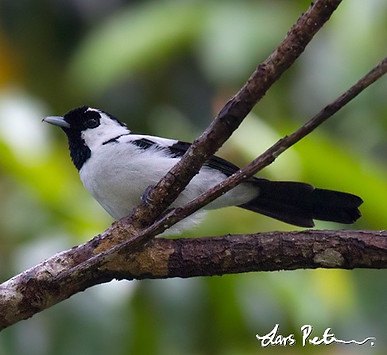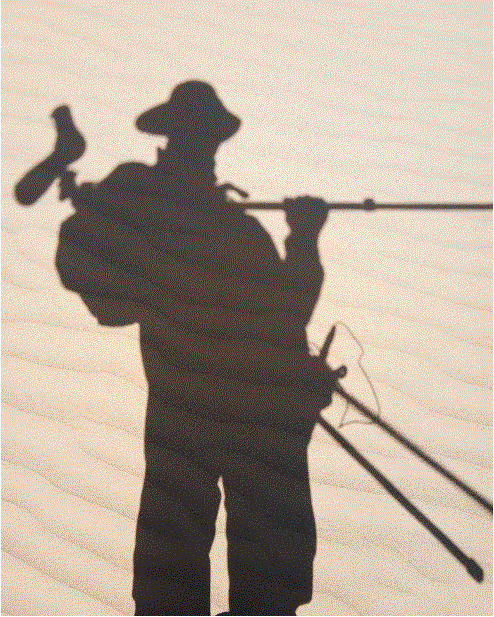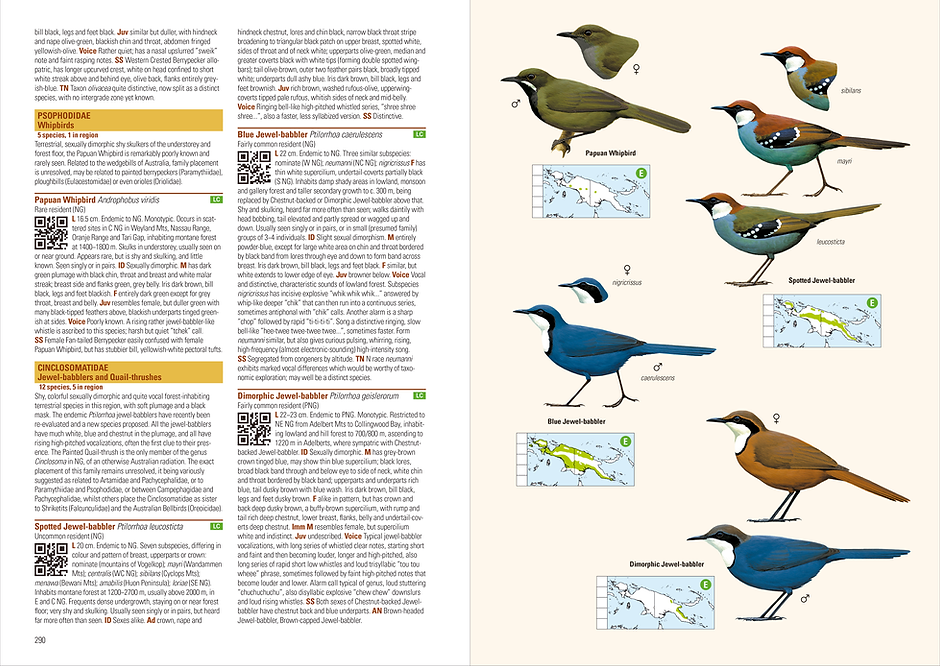Birds of New Guinea including Bismarck Archipelago and Bougainville 2nd Edition by Phil Gregory. 2025 Lynx Nature Books Barcelona. ISBN: I978-84-16728-74-9 Flexi-cover / 978-84-16728-75-6 Hardback 60.00€ 480 pages.
Review by Frank Lambert
The first edition of this excellent field guide was published less than ten years ago, in 2017, but since that time there have been many changes to the taxonomy of birds on the huge island of New Guinea (only exceeded in size by Greenland) and its numerous satellite islands. One suspects that this was the main motive for revising the book, whilst at the same time updating text, paintings and maps where necessary.

Wilson's Bird of Paradise, among the most beautiful birds in the
the World, is endemic to islands of West Papua, Indonesia

.jpg)
_edited.jpg)
Indeed, a significant proportion of forest birds in New Guinea are remarkably skulking, probably largely because of hunting pressure over millennia, and even mid-canopy birds like catbirds can be extremely difficult to see well. Interestingly, this hunting pressure has also perhaps led the evolution of poisonous birds, most notably the pitohuis, but also Blue-capped Ifrit, Regent Whistler and Rufous-naped Bellbird, all of which have batrachotoxins in their skin and/or feathers. I experienced this hunting pressure firsthand in the Snow Mountains of West Papua in 2002 (before there was a road), when I hiked from the town of Wamena (1,700m) to Lake Habbema (3,400m) accompanied only by two local men and a young boy. Unlike me, they brought almost nothing for the eight-day trip, but all of them carried bows and arrows, with which they skillfully killed birds to eat every day (much to my horror!).
I obtained two bows (2m long) and sets of arrows when trekking in the highlands of West Papua. The three-pronged arrow is used to hunt birds.
(photos © Frank Lambert )
Many of New Guinea's 970+ bird species have long been regarded as taxonomic oddities, and no fewer than seven families are endemic to New Guinea. These are the Melanocharitidae (12 species of Berrypeckers and Longbills), Paramythiidae (three species of Tit-Berrypeckers and Crested Berrypeckers), Cnemophilidae (three species of Satinbirds), Rhagologidae (Mottled Berrypecker -previously called Mottled Whistler), Ifritidae (Blue-capped Ifrit), Eulacestomidae (Wattled Ploughbill) and Melampittidae (two species of Melampitta). With so much on offer, it is not surprising that birding trips to New Guinea are very popular despite the huge challenges posed in finding many of these alluring but skulking, range-restricted species.

Mottled Berrypecker Rhagologus leucostigma belongs in its own family, Rhagologidae, and is endemic to montane forest of New Guinea
(photo © Lars Petersson)
Measuring 23 x 16 cm, with 480 pages (only 16 pages more than the first edition), Birds of New Guinea won’t fit in your pocket, but it would easily fit in any rucksack or large side bag, and it uses humidity-resistant paper ideal for tropical conditions This field guide is succinct, leaving out breeding and other biological data to concentrate on the field identification and distribution of the birds of the region, and in providing brief but important taxonomic notes in relevant species accounts. Identification when compared to similar species is also addressed in the text, as is voice, although the voice descriptions are perhaps inadequate in places. . Unlike the first edition, the second edition has QR codes for every species that link to online resources hosted by the Cornell Lab of Ornithology, where the reader can view photos and videos and listen to relevant audio recordings.

Nearly all of the recognised species of Bird of Paradise are endemic to the island of New Guinea and its nearest satellite islands.
Whilst this Lynx guide is not the only modern field guide on the birds of New Guinea, it is much more up to date than its rival, The Birds of New Guinea (by Thane Pratt and Bruce Beehler), published by Princeton University Press in 2015. The latter is a similar-size and is a much appreciated field guide that includes 780 species (plus many distinctive subspecies) that occur on ‘mainland’ New Guinea and offshore islands such as Aru, the West Papuan Islands (Raja Ampat), D’Entrecasteaux Islands and the Louisiade Archipelago.

This new Lynx field guide, like the first edition, sets itself apart from that of Pratt and Beehler by its fully updated taxonomy and in its broader geographic scope (shown above), with the inclusion of the Bismarck Archipelago (the larger islands of New Britain, New Ireland and Manus being the best known of these) and Bougainville as well as all the island groups included by the Pratt and Beehler. Whilst Bougainville is part of PNG, its avifauna has strong affinities with the Solomon Islands, which lie to the south-east. Choiseul is separated from Bougainville by only 40km of ocean.
The Bismarck Archipelago and Bougainville harbour many species that are not found on mainland New Guinea and are therefore not included in the Birds of New Guinea guide by Pratt and Beehler, yet a significant number of birders visiting PNG opt to visit the Bismarck Archipelago, whilst Bougainville has recently become relatively easy to reach. The inclusion of the Bismarck Archipelago and Bougainville adds more than 75 species to the guide.


Bismarck Black Myzomela and Bismarck Monarch are confined to the Bismarck Archipelago of Papua New Guinea (photos © Lars Petersson)
Experienced New Guinea birders have long been aware of the rather inadequate taxonomy that had, until fairly recently, been generally followed in lists and books about the birds of New Guinea. Many observers have advocated the splitting of various taxa, and whilst Pratt and Beehler elevated a significant number to species level, the publication of the excellent two-volume Illustrated Checklist of the Birds of the World by HBW and BirdLife International (Lynx Editions, 2014-2016), and subsequent taxonomic studies have led to the recognition of significant numbers of additional species in the New Guinea region.
Phil Gregory has incorporated all these splits, based largely on the IOC v15.1 list, into this updated field guide. Hence, this present guide covers 970+ species known to occur in the region covered (compared to 943 in the first edition), including a remarkable 507 endemics (some 56% of the regular avifauna), as well as two undescribed species and more than 75 vagrants.



Two much sought-after New Guinea endemics are Feline Owlet Nightjar ( © Lars Petersson) and Snow Mountain Quail ( © Nigel Voaden).
Splits in the 1st edition that were not adopted by Pratt and Beehler have mostly remained in the second edition. These included the recognition of four species of Pheasant Pigeon Otidiphaps spp., a recently recognized fourth species of Crowned Pigeon (Scheepmaker’s Goura scheepmakeri) as well as number of newly recognized dwarf kingfishers Ceyx spp. A number of recent splits from various island groups are also recognised, such as Rossel Paradise-kingfisher Tanysiptera rosseliana, Louisiade Whistler Pachycephala collaris and Rossel Cicadabird Edoliosoma rostratum from the Louisiade Archipelago, Djaul Monarch Symposiachrus ateralbus and Djaul Flycatcher Myiagra cervinicolor from the New Ireland area, Long-billed Myzomela Myzomela longirostris of the D’Entrecasteaux Archipelago, and Geelvink Cicadabird E. meyerii from Biak and Numfor. By following IOC v15.1 taxonomy for cicadabirds, the second edition also recognises Admiralty Cicadabird E. admiralitatis and Central Melanesian Cicadabird E. erythropygium (both lumped in 1st edition under Melanesian Cicadabird E. remotum).
Other notable changes in the second edition include the recognition of eight species of Ailuroedus catbirds instead of just two in first edition, and three species of Brush Cuckoo Cacomantis sp. (Sahul, Solomons and Manus). Superb Bird of Paradise Lophorina superba has been split into three species, with very different English names, Greater Superb Lophorina (mountains of central New Guinea), Vogelkop Superb Lophorina, and Lesser Superb Lophorina (mountains of SE New Guinea). The guide also recognises an ‘interim species assemblage’ of seven Colluricincla Shrikethruses derived from splitting Little Shrikethrush. Finally, the recent split of members of the Rufous Fantail complex (originally all included in Rhipidura rufifrons) has required including two additional species, Solomons Rufous and Louisiade Fantails, whilst Slender-billed Cuckoo Dove Macropygia amboinensis now splits into Amboyna and Sultan’s Cuckoo Doves.

Nearly all of the recognised species of Bird of Paradise are endemic to the island of New Guinea and its nearest satellite islands.
Pitta enthusiasts will happily note that there are now five species from the Red-bellied Pitta complex (derived from the splitting up of Erythropitta erythrogaster) in the region covered by this guide, and that Hooded Pitta is represented by two newly recognised species, Eastern Hooded Pitta Pitta novaeguineae and Biak Hooded Pitta P. rosenbergii. Whilst there have been recent moves to also split the northern subspecies of Papuan Pitta (Erythropitta macklotii habenichti), this taxon is hardly different to E. m. macklotii (the most widespread subspecies) and, in my opinion, there is insufficient evidence to give it species status (Lambert 2025). Furthermore, IOC v.15.1 lumped Tabar Pitta, New Britain Pitta and New Ireland Pitta as Bismarck Pitta E. novaehibernicae but this has not been followed in this book (or by Lambert 2025). On the other hand, the subspecies of Papuan Pitta in the D'Entrecasteaux Archipelago (E. m. finschii) is a likely candidate for splitting from Papuan Pitta.

The striking subspecies of Papuan Pitta in the D'Entrecasteaux Islands, subspecies finschii, could be recognised as a full species in the future (photo from Fergusson Island , © John C Mittermeier).
Although Phil Gregory follows the taxonomy found in IOC v15.1, I noticed a few deviations in addition to those of the pittas mentioned above. For example, he recognises Snow Mountain Tiger Parrot Psittacella lorentzi as a split from Painted Tiger Parrot P. picta as well as Creamy-breasted Fig Parrot Cyclopsitta amablilis and Red-faced Fig Parrot Psittaculirostris cervicalis which IOC still lumps with Black-fronted Fig Parrot C. nigrifrons and Large Fig Parrot P. desmarestii, respectively.
There are a few lumps in the guide, as well as splits. For example, Karimui Owlet-nightjar Aegotheles terborghi (formerly treated as a subspecies of Barred Owlet-nightjar A. bennettii), is now split, but Archbold’s Owlet-nightjar A. archboldi has been lumped with Mountain Owlet-nightjar A. albertisi. Strangely, the extensive range of archboldi shown in the 1st edition (the mountains of West Papua) is no longer shown as an area where Mountain Owlet-nightjar occurs – presumably this is a mapping error.

The fabulous Mountain Owlet-nightjar A. albertisi photographed in the Arfak Mountains of West Papua (© Lars Petersson).
Two undescribed species, which also featured in the 2017 edition, remain undescribed, but nevertheless feature in this guide. These are Foya Imperial-pigeon Ducula sp., known from the remote Foya Mountains, and Bismarck Flycatcher Microeca sp. (more often called flyrobins rather than flycatchers) which several observers, including myself, have observed in the Bismarck Archipelago (and there are photos, too). As noted by Phil Gregory, future research and field exploration will inevitably find undescribed taxa in this biogeographically complex yet still poorly explored region.
All the species of the region are depicted on 216 Plates, with more than 1,800 illustrations. The paintings are generally on the page opposite the relevant species accounts, although in some instances the species accounts text flips over to the subsequent page. This is not ideal, of course, but the detailed nature of the text sometimes means that it will not all fit on the page opposite the relevant plate. The detailed text is, nevertheless, succinct. Seventy-five vagrant species are included in a separate set of plates at the back of the book. The index has also been greatly improved when compared to the first edition since it now contains alternative names that may be more familiar to the user.

The pigeons and doves of New Guinea, numbering a remarkable 71 species, include many incredible species.

The magnificent Victoria Crowned Pigeon is endemic to northern New Guinea ( © Nigel Voaden).
Whilst the brief but comprehensive species accounts face the illustrations, the 880+ colour distribution maps, some of which have been updated, are located on the plates themselves, adjacent or below the species that they illustrate. Maps are coloured to represent status, whilst the letter E on relevant maps is used to indicate the species that are regional endemics. Maps are, however, still all based on a single template of the region, which means that it is difficult to appreciate the details for a considerable number of mostly island-endemic species that have highly restricted ranges. This seems like a lost opportunity to improve the maps for the second edition.
The illustrations, most of which originate from Lynx’s Handbook of the Birds of the World series, include many that have been revised and others painted especially for this guide. They derive from 25 different artists, meaning that some groups are more accurately illustrated than others, but the great majority of illustrations are very good to excellent. Some plates seem a little “empty”, but this is a consequence of having the text facing the plates, since the text for some species is necessarily long. Some of the decisions about where to place particular illustrations seem a little misguided, such as depicting Australian Bustard on the same plate as Pacific Swift and two species of coucal, and having the nightbirds in different places due to taxonomic affinities, when it is surely more useful to keep them all together in a book designed to be a field guide. Overall, I noted a small number of improved illustrations, but many are reproduced slightly larger to reduce open space on the plates.
.jpg)
Three species of cassowary are found on New Guinea, two of which are endemic, but only one is relatively easy to see - Southern Cassowary (photo © Frank Lambert).
As the only single-volume field guide to comprehensively cover all of birds recorded in the New Guinea region and its offshore islands, this guide will now be indispensable to anyone visiting PNG on a birding trip that includes New Britain or other islands in the Bismarck Archipelago, it is also undoubtedly very useful for anyone interested in birding the region. This is especially true for anyone with a particular interest in regional bird taxonomy, since it clearly shows which taxa are now recognized as good species.
Those who have already invested in the Princeton New Guinea guide or the 1st edition of this guide, may decide not to buy this guide, but this guide is without doubt the best one to take on any trip to the region covered. New Guinea is an addictive birding paradise, and whenever I look at this guide, I feel like jumping on the next plane to West Papua or PNG! Whilst I have visited the region on many occasions, and travelled to most parts of our planet, New Guinea is the region that I always crave to return to, not just for the incredible birds, but also for the dramatic scenery, the wonderful people, and their remarkable cultures.
References mentioned
-
Gill, Frank, David Donsker and Pam Rasmussen (eds). 2025. IOC World Bird List (v15.1).
-
Lambert, Frank. 2025. Pittas, Broadbills and Asities: The Old World Suboscine Passerines. Bloomsbury.
-
Pratt, Thane K. and Bruce M. Beehler 2015. Birds of New Guinea (2nd Edition). Princeton University Press, Princeton and Oxford.

One amazing group of birds found in New Guinea, not mentioned in the review above, are the bowerbirds. They are shy, and often rather drab, but their bowers are spectacular, especially that of the Vogelkop Bowerbird Amblyornis inornata. (Photo of myself and a client examining the bower in the Arfak Mountains © Lars Petersson).


